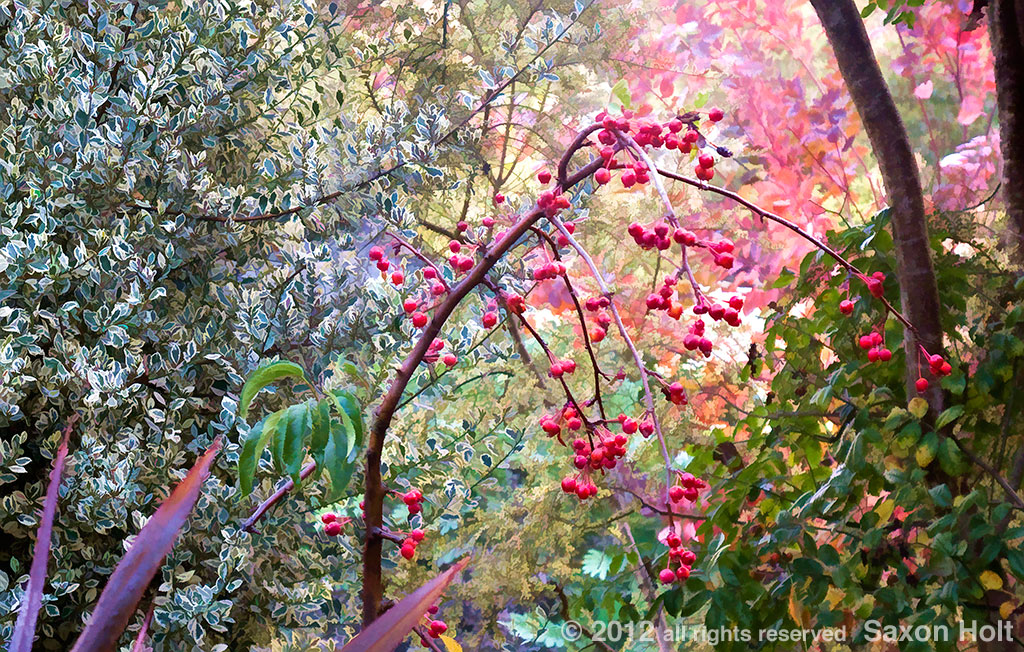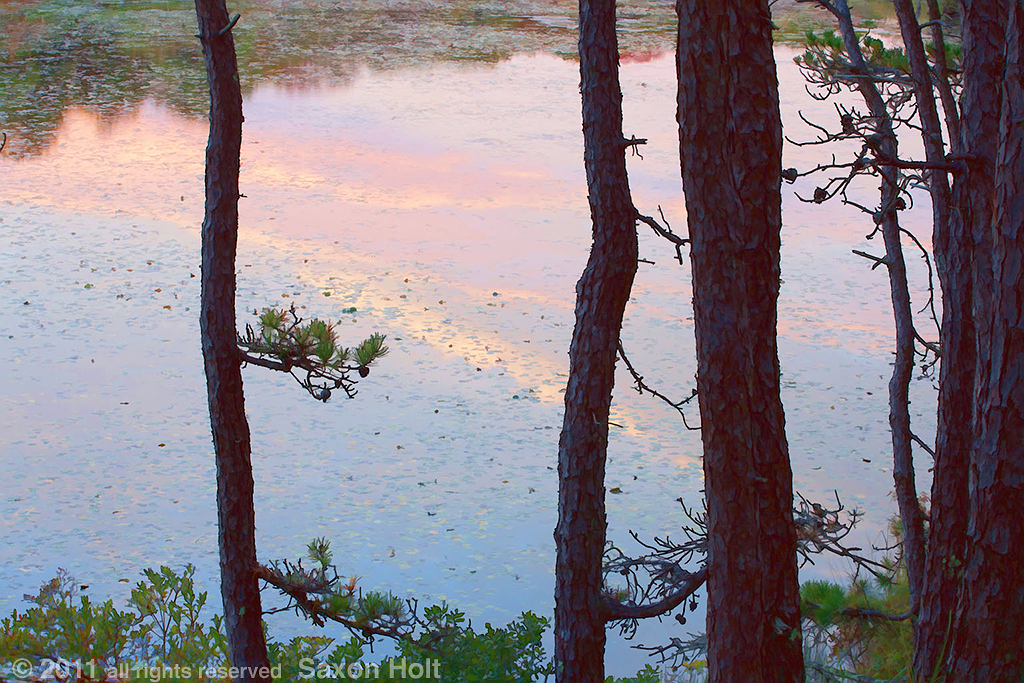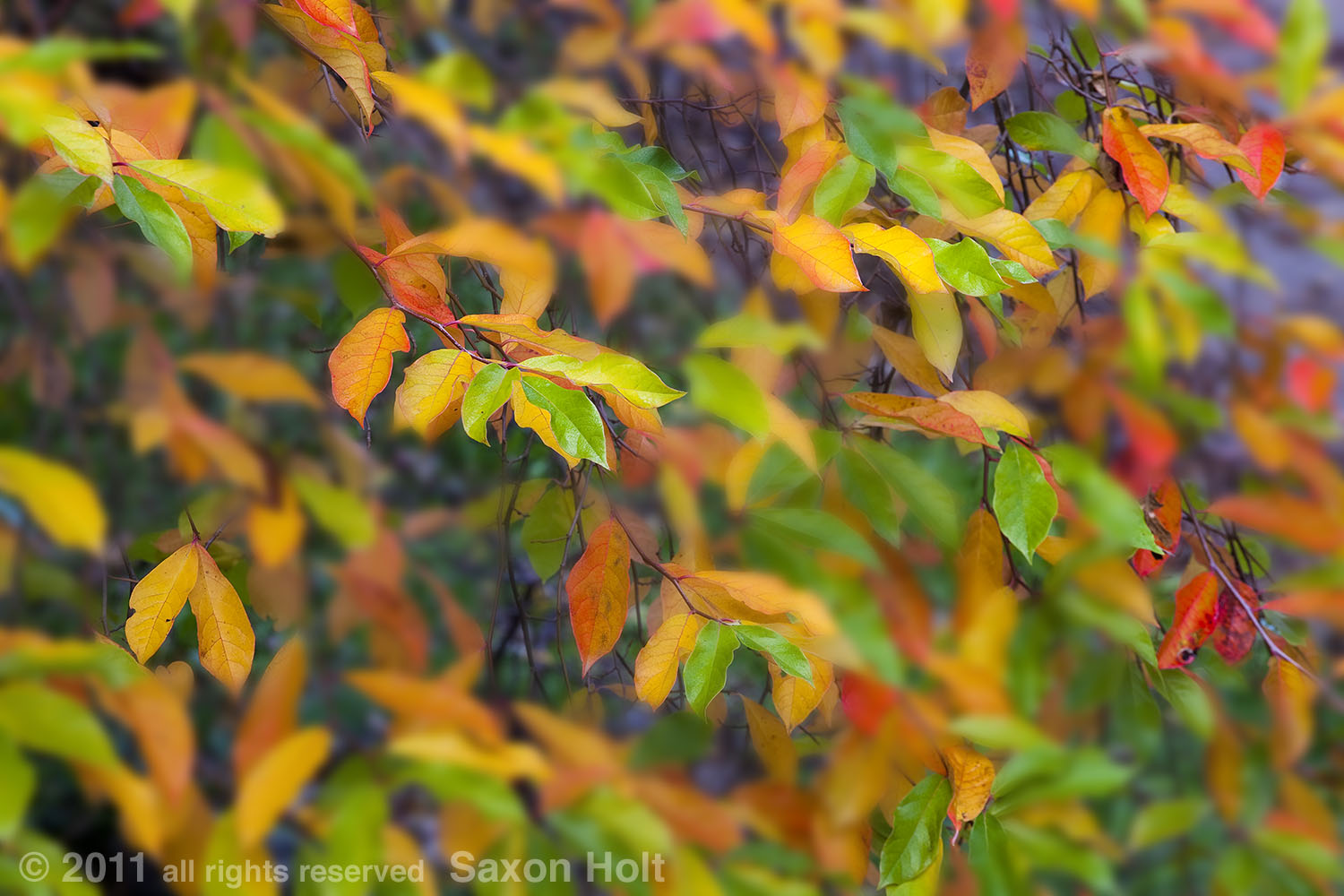M’Eyes, Weeping Tapestry
I promised myself I would complete a portfolio of images documenting my perceptions after the detached retina. There were a good number attempts to do this with my G11 camera in the first months after the surgery. I never got around to working on...
Dusk, Blackwater Pond
Blackwater Pond in the Cape Cod National Seashore, seen here at dusk last October, is rendered using computer manipulation of the digital file. There was a time, and I can define that time more precisely: before my vision was altered with the series of...
Seeing Slices
I am sometimes baffled by what I see.
I will slap my face looking at a scene and wonder why am I not seeing what I expect to see. The Tupelo tree (Nyssa sylvatica) in my front yard commands attention when it comes into fall color,...
Dawn at the Cape
Sometimes the less said about the creative process, the better. Sometimes I just want to do my work and move on.
If you like this computer altered photo of dawn at the beach in North Truro during my recent trip to Cape Cod, I will...
Tapestry Swirl
Drifting through Beth’s garden in the quiet still morning I was unsure whether I would take any pictures. I just wanted some time to appreciate her marvelous Oregon garden so full of choice plants and foliage textures. Before you take a decent picture you...









